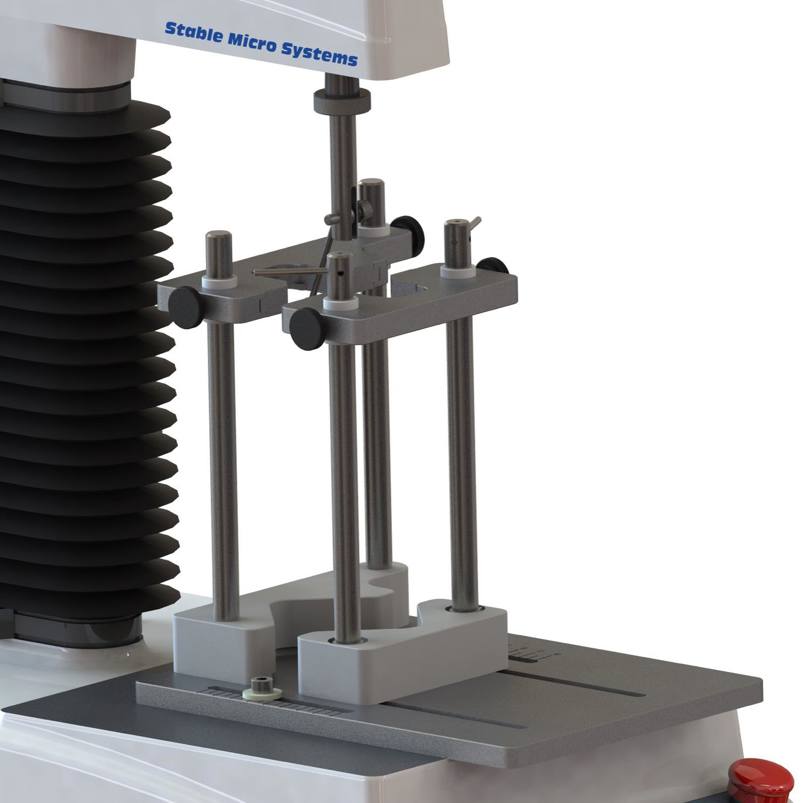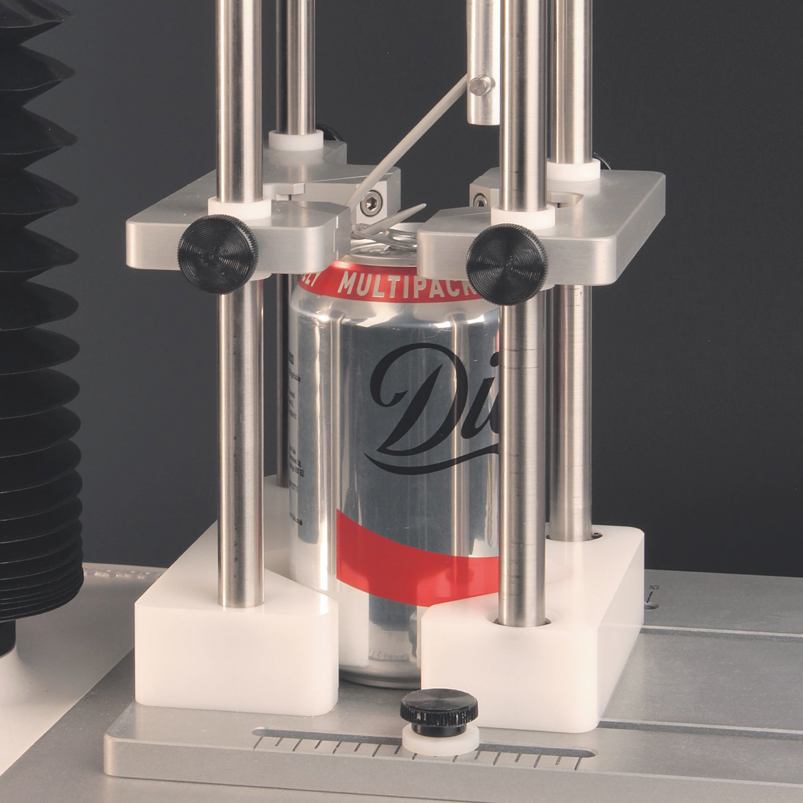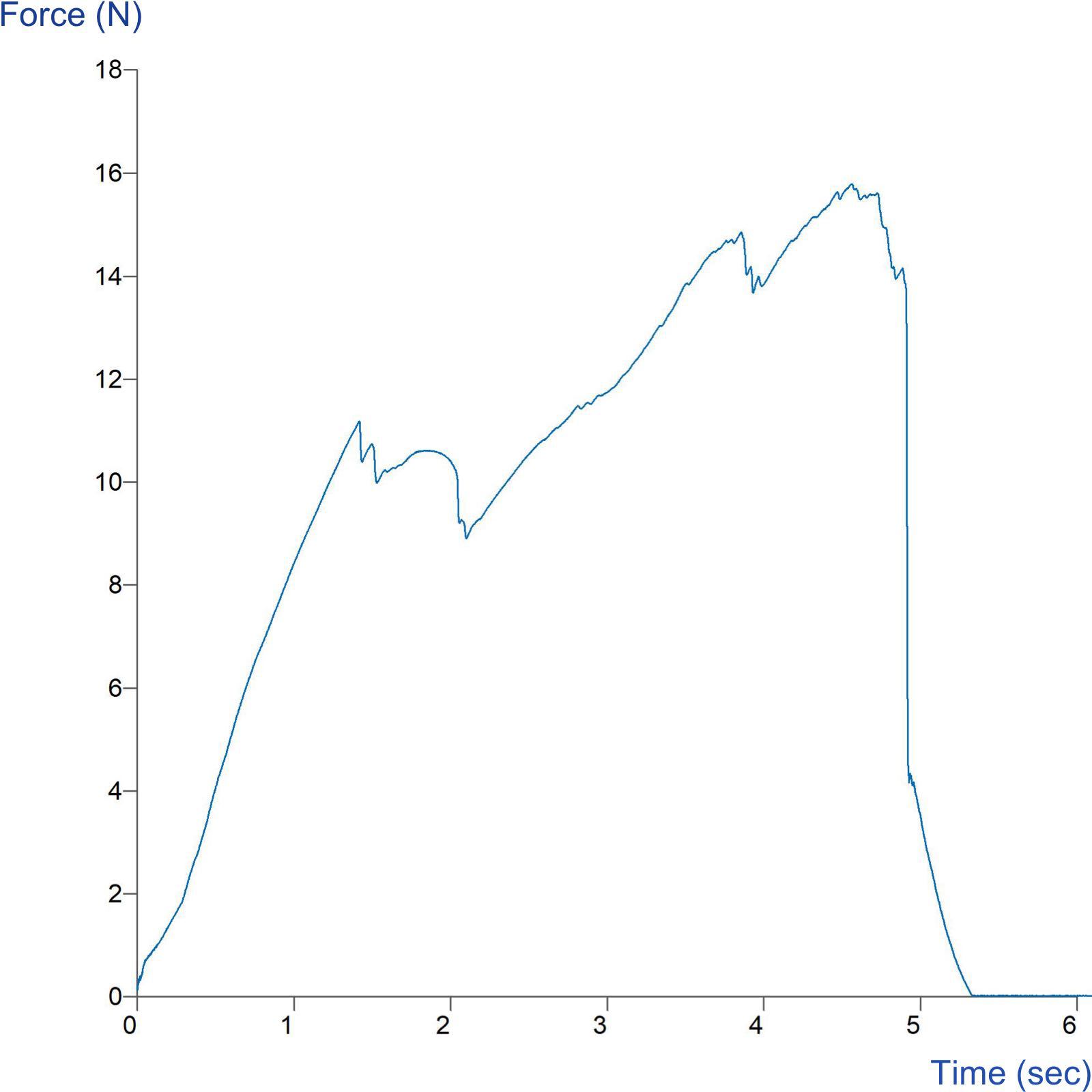Product overview
Understanding and quantifying the force needed to use a ring pull is vital for both packaging manufacturers and their customers to ensure safety, functionality and consumer experience. The force required to open tins and cans is dictated by the shape of the ring pull and lid, their materials and the depth of the groove in the lid. Until now, only subjective methods were available for assessing 'force to pull', which made it difficult to identify the design that provided both ease of use and packaging integrity.
This rig was developed to allow manufacturers of food tins and beverage cans to measure the force needed to lift the ring pull and open the container. This relatively new development could signal the end of consumer frustration with trying to open metal packaging that is too stiff, or where the ring pull detaches from the lid. The rig works by locking the product in place on the Texture Analyser and attaching a hook adapter to its ring pull. The hook is pulled upwards, mimicking the action of a person opening the can, while measuring the force needed to lift the ring pull and finally break the seal.
The universal design of the Ring Pull Rig means non-circular shapes, such as meat or fish cans, can also be accurately analysed. The flexibility of Exponent Connect software has also allowed the development of a special test for tins that require a two-step pulling action. The rig first measures the force needed to break the seal before pausing and allowing the user to adjust the hook direction or rotate the tin. The second part of the test then measures the force required to peel and remove the metal lid completely. By understanding the force needed to open cans and tins, packaging designers and engineers can find the correct balance between safety and convenience for the consumer. The Ring Pull Rig aims to give manufacturers a detailed analysis of opening behaviours so they can optimise future product development.
The Ring Pull Rig can also be enhanced with the use of an Acoustic Envelope Detector, to capture and measure the 'fizz' sound of a carbonated drink, and the Video Capture and Synchronisation System which allows the user to replay the data frame by frame for in-depth analysis.
Ideal sample form
Tins of all shapes and sizes.
Benefits and limitations
- Provides a two-step pulling action which is necessary for opening food cans
Technical information
Installation
Full installation instructions are provided within the Education Zone of the latest Exponent/Connect software version and on the technical information sheet accompanying this product.
Chemical compatibility
Stable Micro Systems probes and attachments are commonly made from four materials: anodised aluminium (AA6082 T6), stainless steel (316 T), Delrin (acetyl copolymer) and Perspex (polycarbonate).
In general use, probes and attachments made from these materials will be suitable for testing food products and inert non-food materials.
The four materials listed above are not universally resistant to all types of chemicals and as such the compatibility of the probe/attachment material with the product (to be tested) must be established to prevent damage to the probes and attachments. If the compatibility of the product with the probe is unknown to the customer then the chemical information about the product (Material Safety Data Sheet or Product Data Sheet) should be submitted to Stable Micro Systems. Stable Micro Systems will then assess the suitability of the probe/attachment material for use with the product and advise accordingly. If this advice is not sought then Stable Micro Systems will not accept liability for probes/attachments damaged by chemical attack from the product being tested.
Cleaning and maintenance
All probes and attachments may be cleaned in warm (or hand hot) water using a mild detergent. A soft brush may be used but abrasive cleaning aids should be avoided. Stable Micro Systems products should not be microwaved or cleaned in a dishwasher.
Screw threads should be lightly lubricated after drying using a light lubricant, e.g. petroleum jelly, mineral oil. This will aid the fitting and unscrewing of the item. Each component of a probe or attachment should be wrapped separately when stored, to avoid scratching or chipping. This will safeguard against any unnecessary damage to the accessory.





